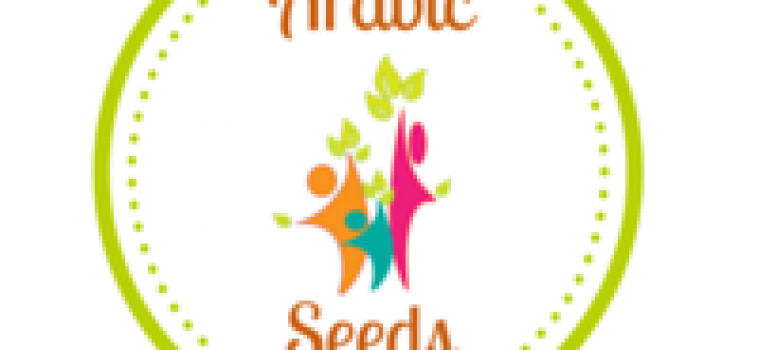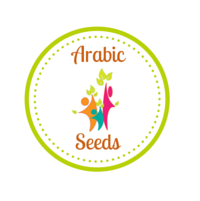Blog Post by: Arabic Seeds.
! السّلامُ عَلَيْكُمْ
Hello! مَرْحَباً
In this article, we introduce you our approach to teach Arabic to little kids (around 3-7 years old) and give you play-based activities’ ideas, based on this approach, to use with our mini-book 1 and workbooks 1.
The objectives:
– make young children enjoy and love Arabic,
– give them a head start in acquiring this language!
1) Early Second language Teaching Approach:
Our own experience in raising a bilingual child and the advises of Early Second Language Learning experts, make us believe in an approach based on play, daily life contexts, social interactions and whole-language exposure/immersion.
In fact, young children effectively acquire a language by being exposed to it through fluent, rich and meaningful learning experiences. Teaching them list of isolated words or flashcards, without links between them, is denying their powerful brain’s mechanisms in learning a new language.
Moreover, the use of a multimodal approach is important to respond to each kind of learner: kinesthetic (physical), auditory, oral and visual.
We recommend to plan activities:
- based on a particular theme or story,
- using daily life/meaningful contexts and repetitions in various contexts,
- relying on the children’s ability to naturally learn through play, fun and social interactions,
- stimulating their powerful imagination and senses.
- making them practice the 4 skills of the language: listening, speaking, (pre-)writing, (pre-)reading.
Activities have to be adapted to the development, needs, ways of learning and interests of the children. For the preschool and kindergarten aged children plan short and various activities of this kind:
- storytelling,
- pretend play & drama,
- arts & crafts,
- games & physical activities,
- rhythms and songs,
- science experiments and pre-Math.
2) Application: 7 (and more) Fun activities to accompany our mini-book 1 & workbooks 1:
Activity 1: Storytelling
Material:
– our free mini-book 1 and its audio,
– props, puppets and flashcards/pictures representing the 2 kittens and the key words of the story; ex: picture of a park, bottle of milk, food toys for the onion, puppet for the fish etc..
Instructions:
Read aloud the story and involve more the children by acting it out (become a character) and using theatrical intonations, facial/body gestures and props/ puppets/pictures.
You can also make them listen to the audio including the voice and sounds of the kittens and the park ambiance.
Activity 2: Vocabulary Hunt (association game)
Material:
– objects, stuffed animals, puppets and flashcards/pictures representing the 2 kittens and the key words of the story; ex: picture of a park, drawing of the sun, bottle of milk, food toys for the onion, puppet for the fish etc..
Instructions:
Hide the key words representations in the room and request the children to find them. To help them, you can show the picture from the mini-book while saying the word.
Advice: You don’t need to teach every single word of the story.
You can read the rest of this article at
- December 2020 Featured Blogger – Not Another Mum Pod - December 29, 2020
- Muslimah Bloggers Awards 2020 Winners - December 22, 2020
- Muslimah Bloggers Awards 2020 Nominees - November 19, 2020



